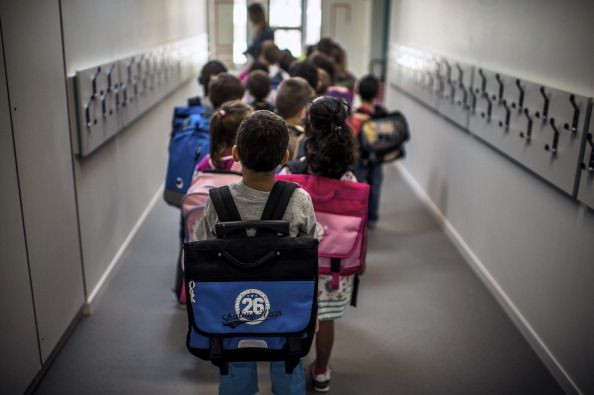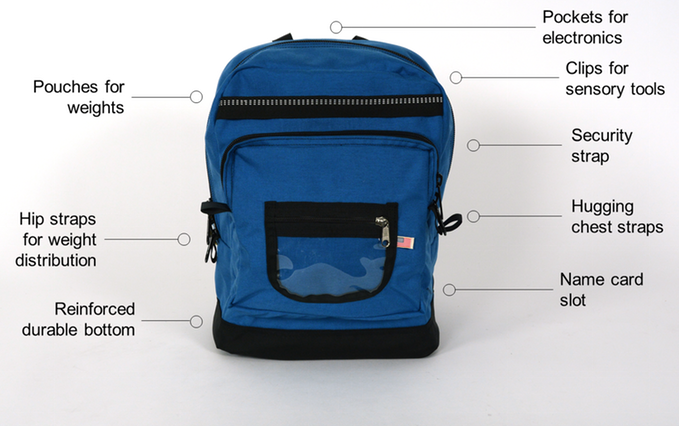Weighted Backpack For Kids With Autism Helps Induce Calm, Reduces Risk Of Sensory Overload

One in 68 children is on the autism spectrum — a complex range of brain developmental disorders that can make them susceptible to sensory overload. Previous research has shown that applying deep touch pressure — such as squeezing or hugging — can have calming effects on people with autism. Knowing this, students at the University of Minnesota developed a backpack using sensory integration techniques to help calm children as they feel inundated with information during their school day.
Deep touch is one technique that demonstrates added weight and pressure calm children by creating a point of focus that draws attention away from their environment, especially while at school where they can easily become engulfed by sensory information. The “Nesel Packs” straps and weights are designed to help children with autism feel safe and comforted while at school and in moments of stressful sensory overload. Human studies have shown the stimulation from pressure reduces nervous system arousal, which is the root cause of sensory overload, and ultimately relaxes the child.

A person with an autism spectrum disorder may develop a unique set of symptoms, some more severe than others. Autism has been associated with intellectual disability, difficulties with motor coordination, sensory processing and attention, and sleep and gastrointestinal issues. In America, more than three million people live with an autism spectrum disorder and the prevalence rates have increased 10 to 17 percent in recent years. The demand for a product to protect a child from sensory overload increases with prevalence rates.
Many people on the autism spectrum have difficulty processing everyday sensory information. The brain organizes sensory information in our environments, like sound, light, and touch. Those who can become easily overwhelmed by sensory information may experience stress, anxiety, and even physical pain. For parents and teachers, knowing what a child’s triggers are can be key to maintaining a calm demeanor. But children cannot always be sheltered from sensory information since it’s all around them. That’s where the Nesel backpack comes in.
The word “Nesel” comes from nestle, which means to settle or lie comforting within or against something. The team from the University of Minnesota wanted to provide the feeling of comfort and safety for students, between the ages of 6 and 12, while wearing the pack. The backpack was constructed for durability, along with all of the common backpack features, like a name card window, and internal pockets and zipper compartments. But what sets it apart are the hip straps for weight distribution, clips for sensory tools, hugging chest straps, and pouches for weights.
The Nesel Pack, which was born out of an assignment for an entrepreneurship course at the University of Minnesota, has taken off since its launch on March 19 with the group already exceeding their fundraising goal of $10,000. The backpack’s final design, which sells for $115, was the result of collaborative feedback from meetings with parents, occupational therapists, teachers, and leaders in the autism community. They plan on expanding manufacturing and production to lower the cost and make sure backpacks that were ordered since its launch reach all students within the United States by the first day of school in Fall 2016.
For years, sensory tools like weighted blankets and pressurized snug vests have been some of the most effective products to help high-energy sensory children to calm down. According to Autism Speaks, pressure helps to relieve anxiety by distributing it evenly across the body when the child becomes over stimulated. The vest provides adjustable pressure to the sides, shoulders, and back of the torso for a comforting hug-like squeeze, which helps the child feel calm and relaxed.
The input from muscles and joints sends messages to the brain to communicate how the body is moving, and if the sensations are too difficult for the brain to organize, it becomes overwhelmed. By applying pressure, the sensations can seem more manageable for the child at a time when it’s most important — school.



























